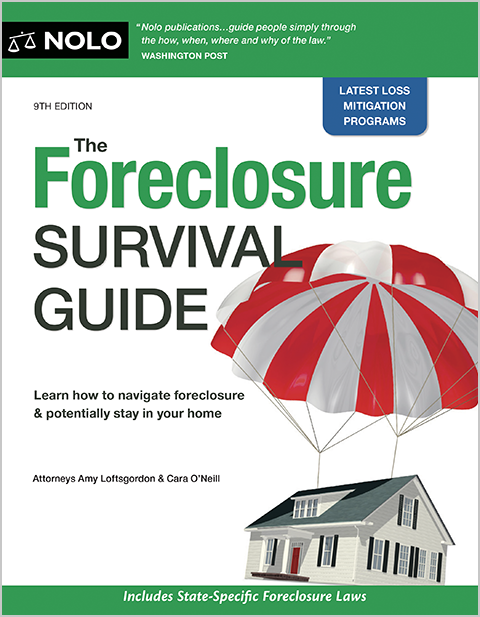In a mortgage contract, an "acceleration clause" is a provision that permits the lender to demand that the borrower repay the entire loan after a default.
When you take out a mortgage loan to buy a home, you'll be required to sign several documents. One of these documents, most likely a mortgage or deed of trust, will have an "acceleration clause," a provision that gives the lender the right to demand immediate payment of the entire outstanding loan balance if certain conditions, such as missed payments or breaches of the contract, occur.
This clause is common in mortgage contracts. It allows lenders to minimize their risk and enables them to recover funds quickly if a borrower doesn't meet their obligations under a mortgage contract. Understanding how acceleration clauses work, what triggers them, and their potential consequences is essential for anyone considering a mortgage or loan. If this clause is activated, you could face serious financial and legal repercussions, including foreclosure, if you can't pay the accelerated amount.
- How Does an Acceleration Clause Work?
- Where Are Acceleration Clauses Commonly Found?
- What Kinds of Defaults Lead to Loan Acceleration?
- When Does Acceleration Happen?
- How to Avoid Triggering an Acceleration Clause
- Acceleration Clause vs. Due-on-Sale Clause
- Pros and Cons of Acceleration Clauses
- Foreclosure Procedures After Acceleration
- Getting Foreclosure Help
How Does an Acceleration Clause Work?
Again, an "acceleration clause" in a mortgage or deed of trust allows the lender, or current loan holder, to demand repayment in full if the borrower defaults on the loan. This type of provision is called an "acceleration clause" because the lender is accelerating the time between when the loan was signed and when the full payment will be expected to be completed.
For instance, a borrower with a 30-year mortgage misses a payment in the 10th year of having the loan. The loan agreement (a deed of trust) has an acceleration clause, which requires the borrower to pay off the entire remaining balance if the loan goes into default. Not making payments constitutes a default. In most cases, after around three months of missed payments, the lender will send the borrower a breach letter (see below), demanding that they catch up on the past-due amounts, plus fees and costs, within 30 days or the loan will be accelerated. If the borrower doesn't pay the overdue payments, the loan is accelerated and the full amount of the loan becomes due, allowing the lender to start foreclosure proceedings. (If the borrower can pay the overdue amounts, the loan isn't accelerated.) Once a loan is accelerated, the borrower may opt to pay the full amount of the debt. Then, they would receive the title to the home and gain full ownership of the property. (Keep in mind there are also other ways to avoid a foreclosure.)
After the loan is accelerated, the borrower can no longer pay off the loan in installments. The loan changes from an installment contract to a debt that's due in a single, lump-sum payment.
Where Are Acceleration Clauses Commonly Found?
Acceleration clauses are most prevalent in mortgages and deeds of trust. Acceleration clauses can also be found in contacts for personal loans and some leases, especially commercial leases.
What Kinds of Defaults Lead to Loan Acceleration?
The most common kind of default that leads to loan acceleration is when the borrower doesn't make the required payments. But other types of contractual violations can also lead to acceleration. For instance, if the borrower transfers the home's title without getting the lender's prior written consent, the lender can usually require immediate payment of the full loan amount (accelerate it) under a due-on-sale clause.
If the borrower doesn't pay back the entire outstanding loan balance after the loan is accelerated, the lender can start a foreclosure to recoup the amount owed.
When Does Acceleration Happen?
Acceleration generally happens after the lender makes a clear demand for payment of the entire loan balance. Most mortgages and deeds of trust contain a clause that requires the lender to send a notice, commonly called a "breach letter," after the borrower defaults. This letter warns the borrower that the loan is in default before loan acceleration and foreclosure.
If the lender sends a breach notice before acceleration, courts are split as to whether acceleration gets triggered by the notice or the expiration of the cure period given in the notice. Sometimes, though, acceleration automatically occurs when the borrower fails to make a payment. In some places, the filing of a foreclosure complaint (lawsuit) accelerates the loan.
State law and governmental guidelines govern the timing and notice of acceleration before a foreclosure.
Notice of Acceleration: The Breach Letter
A breach letter typically has to specify the following:
- the default
- the action required to cure the default
- a date, in many cases, not less than 30 days from the date the notice is given to the borrower, by which the default must be cured, and
- that failure to cure the default on or before the date specified in the notice could result in acceleration of the debt and sale of the property.
Generally, the servicer will send this letter when the borrower is around 90 days delinquent on payments. That's because, under federal law, in most cases, a foreclosure can't start until the borrower is more than 120 days delinquent on the loan. If you don't cure the default, the foreclosure will begin.
The notice also frequently informs the borrower about the right to reinstate the loan after acceleration (see below) and the right to assert the non-existence of a default or raise a defense in a foreclosure proceeding.
How to Avoid Triggering an Acceleration Clause
The borrower usually gets 30 days to reinstate the loan after receiving the breach letter, before the lender accelerates the loan. Also, state laws often provide a right to reinstate the loan after acceleration to stop the foreclosure. Some states, for example, have a law allowing a delinquent borrower to reinstate the loan by a specific deadline, like 5:00 p.m. on the last business day before the sale date or some other cutoff.
If state law doesn't specifically provide a right to reinstate, many mortgages and deeds of trust contain written language giving borrowers a specific deadline for getting current on the loan. Check your loan documents for a paragraph called "Borrower's Right to Reinstate After Acceleration" or something similar. Often, the contract allows the borrower to reinstate at any time prior to the earliest of:
- five days before the sale of the property pursuant to any power of sale contained in the contract (applicable to a nonjudicial foreclosure) or
- entry of a judgment enforcing the contract (applicable in a judicial foreclosure).
Also, even if the loan contract doesn't mention anything about reinstatement, the lender might, after considering the situation, let you reinstate.
But you might not get the right to complete a reinstatement if the lender accelerated the loan because you sold or transferred the property without permission. Check the mortgage or deed of trust that you signed when you took out the loan to get detailed information about your right, if any, to reinstate the loan.
How to Reinstate the Loan After Acceleration
To reinstate, you'll have to pay the lender all of the overdue amounts as if no acceleration had occurred, cure any other kind of default, and pay all expenses that the lender incurred in enforcing the contract, like:
- reasonable attorneys' fees
- property inspection and valuation fees, and
- other fees incurred to protect the lender's interest in the property.
The lender might require you to make a reinstatement payment with a money order, certified check, bank check, cashier's check, or electronic funds transfer.
After you reinstate, the mortgage or deed of trust, and your obligations under it, remain fully effective as if no acceleration had occurred.
Acceleration Clause vs. Due-on-Sale Clause
An acceleration clause and a due-on-sale clause are both provisions commonly found in mortgage agreements. They both allow a lender to demand full repayment of a mortgage (accelerate the loan), but they are triggered by different events and serve distinct purposes.
Again, an acceleration clause allows the lender to demand immediate repayment of the entire loan balance if the borrower defaults on the loan, such as by missing payments or violating other terms of the agreement. A due-on-sale clause further protects the lender by specifically allowing it to demand immediate repayment of the mortgage loan balance upon the sale of the property or a transfer of the property's ownership.
While both clauses protect the lender's interests, the acceleration clause generally concerns a borrower's default, whereas the due-on-sale clause is specifically designed to prevent the transfer of the loan to a new owner. However, with either clause, the loan can be accelerated under the right circumstances.
Pros and Cons of Acceleration Clauses
Acceleration clauses offer several advantages—for lenders. These clauses protect lenders by allowing them to demand full repayment if a borrower defaults, reducing the risk of prolonged nonpayment. They also allow the lender to recover the entire loan amount, either through repayment or the foreclosure process. Having an acceleration clause in a mortgage or deed of trust often deters borrowers from missing payments or violating the agreement.
Acceleration clauses also have notable drawbacks—mostly for borrowers. A borrower might have to repay the entire loan balance on short notice or face the consequences. When borrowers are unable to meet a repayment demand, they can face foreclosure, lawsuits, and damage to their credit, which can make future borrowing more difficult. Even for lenders, there is some risk, as they could incur a loss if the borrower can't pay the accelerated amount, and the property must be foreclosed and sold at a loss.
Foreclosure Procedures After Acceleration
Depending on state law and the circumstances, once the loan is accelerated and if you don't reinstate or take other steps to stop the process, the lender will foreclose. The lender will either file a lawsuit in court to foreclose (a judicial foreclosure) or follow specific out-of-court procedures, set out in the state statutes, to complete a nonjudicial foreclosure.
After the lender fulfills all of the legal requirements for foreclosure, the home is sold to a new owner at a public sale, often the foreclosing lender. With judicial foreclosures, a sheriff's sale is customarily used as this last step in the foreclosure process. In nonjudicial foreclosures, trustee's sales are common.
The successful bidder at the auction becomes the new owner of the property, and the proceeds go toward paying off the loan.
Getting Foreclosure Help
If you can't keep up with your mortgage payments, notify your loan servicer immediately to find out what kind of options are available to you.
If your loan has been accelerated and you're facing a foreclosure, consider talking to a foreclosure lawyer to learn whether you might have any available defenses and to learn about the different loss mitigation options that might be appropriate for your situation.
If you can't afford a lawyer, a HUD-approved housing counselor is an excellent (free) resource, especially for information about different ways to a
- How Does an Acceleration Clause Work?
- Where Are Acceleration Clauses Commonly Found?
- What Kinds of Defaults Lead to Loan Acceleration?
- When Does Acceleration Happen?
- How to Avoid Triggering an Acceleration Clause
- Acceleration Clause vs. Due-on-Sale Clause
- Pros and Cons of Acceleration Clauses
- Foreclosure Procedures After Acceleration
- Getting Foreclosure Help

